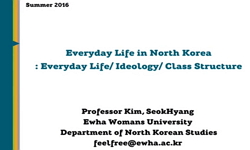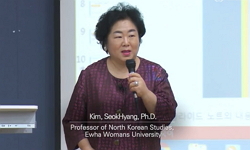한국은 오랫동안 벼 도열병 방제 연구를 진행해왔고 다양한방제 체계를 구축하고 있으나 벼 도열병은 지속적으로 변이가이뤄지기 때문에 항상 벼 도열병에 대한 예찰과 방제를 위한 연구가...
http://chineseinput.net/에서 pinyin(병음)방식으로 중국어를 변환할 수 있습니다.
변환된 중국어를 복사하여 사용하시면 됩니다.
- 中文 을 입력하시려면 zhongwen을 입력하시고 space를누르시면됩니다.
- 北京 을 입력하시려면 beijing을 입력하시고 space를 누르시면 됩니다.


고위도 북한 접경지역과 국내 벼도열병균 레이스 분포 분석 = Analysis of the Distribution of Rice Blast Pathogens in High-Altitude North Korea Border Areas and Domestic Rice Cultivars
한글로보기https://www.riss.kr/link?id=A108767735
- 저자
- 발행기관
- 학술지명
- 권호사항
-
발행연도
2023
-
작성언어
Korean
-
주제어
Blast disease ; Distribution ; North Korea ; Race ; Rice
-
등재정보
KCI등재,SCOPUS
-
자료형태
학술저널
- 발행기관 URL
-
수록면
243-250(8쪽)
- 제공처
-
0
상세조회 -
0
다운로드
부가정보
국문 초록 (Abstract)
한국은 오랫동안 벼 도열병 방제 연구를 진행해왔고 다양한방제 체계를 구축하고 있으나 벼 도열병은 지속적으로 변이가이뤄지기 때문에 항상 벼 도열병에 대한 예찰과 방제를 위한 연구가 필요하다. 북한은 남한으로의 벼 도열병 원인균이 유입될수 있는 주요 경로 중 하나임으로 북한에서 발생하는 벼 도열병의 균주 분포와 다양성 연구는 한국에서 발생할 수 있는 벼도열병 방제 연구에 중요한 자료일 수밖에 없다. 2018년도 철원과 수원에서 분리한 균주는 KI와 KJ의 점유율이 유사한 수준이었으나 이후 진행된 연구 결과에서는 레이스 분포에 변화가 나타났다. 수원은 2018년 KI/KJ 레이스의 점유율이 유사했으나2019년 2020년으로 갈수록 KJ레이스의 점유율이 높아졌고 전주의 경우 2019년 KJ/KI 레이스 점유율이 역전된 후 2020년까지 KJ 레이스의 점유율은 높게 유지되었다. 철원의 경우 2018년부터 2019년까지 KJ/KI 레이스 비율이 유사하였는데 2020년에는 거의 KJ 레이스만 분포하는 것을 발견하였다. 반면 고위도 지역인 중국 내 북한 접경지역인 단둥과 연길에서 분리한 도열병균의 레이스 분포를 비교 분석하면, 국내의 도열병 레이스 변화와 달리 2021년부터 2022년까지 중국의 북한 접경지역인 단둥과 연길에서는 KI 레이스가 우점이었다. 단인자 계통 저항성 검정 실험에서는 IRBL9-W, IRBLIR-24 계통이 국내와 고위도 북한접경지역 모두 공통의 저항성원으로 분류되었다. 비록 남한 및중국 내 북한 접경지역에서의 벼도열병균의 레이스 분석 연도의 차이가 있어 직접적인 비교는 어려우나 중국의 접경지역과남한의 벼도열병균 레이스의 지역간 비교는 도열병 방제 체계구축에 중요한 자료로 판단된다.
다국어 초록 (Multilingual Abstract)
To explore the distribution and the resistance reaction of rice blast pathogens that may occur in North Korea, rice blast pathogens in the North Korean border regions of Dandong and Yeon-gil in China and the North Korean border region of Cheorwon in S...
To explore the distribution and the resistance reaction of rice blast pathogens that may occur in North Korea, rice blast pathogens in the North Korean border regions of Dandong and Yeon-gil in China and the North Korean border region of Cheorwon in South Korea were analyzed. In addition, comparative analysis was conducted with rice blast pathogen in Suwon and Jeonju, inland regions of South Korea. Resistance reactions above average were observed in monogenic rice lines (IRBLzt-T, IRBL9-W, IRBL20-IR24, and IRBLta-CP1) in Jeonju, Suwon, and Cheorwon from 2018 to 2020. In Dandong and Yeon-gil, the monogenic lines IRBLz5-CA, IRBL12-M, and IRBL19-A consistently showed resistance reactions for three years. Notably, IRBL19-A exhibited strong resistance. Race distribution analysis in South Korea indicated a shift from KI to KJ dominance from 2018 to 2020, while in the North Korean border regions of Dandong and Yeon-gil, the KI race was dominant in 2021 and 2022. The race distribution of rice blast pathogens in China's North Korean border regions differed significantly from that in South Korea.
동일학술지(권/호) 다른 논문
-
First Report of Soft Rot Caused by Pectobacterium brasiliense on Cucumber in Korea
- 한국식물병리학회
- Soo-Min Hong
- 2023
- KCI등재,SCOPUS
-
Emerging Research Advancements to Overcome the Peach Spring Frost
- 한국식물병리학회
- Pandiyan Muthuramalingam
- 2023
- KCI등재,SCOPUS
-
First Report of Melon Soft Rot Disease Caused by Pectobacterium brasiliense in Korea
- 한국식물병리학회
- Kyoung-Taek Park
- 2023
- KCI등재,SCOPUS
-
- 한국식물병리학회
- 이수민
- 2023
- KCI등재,SCOPUS





 ScienceON
ScienceON 스콜라
스콜라





